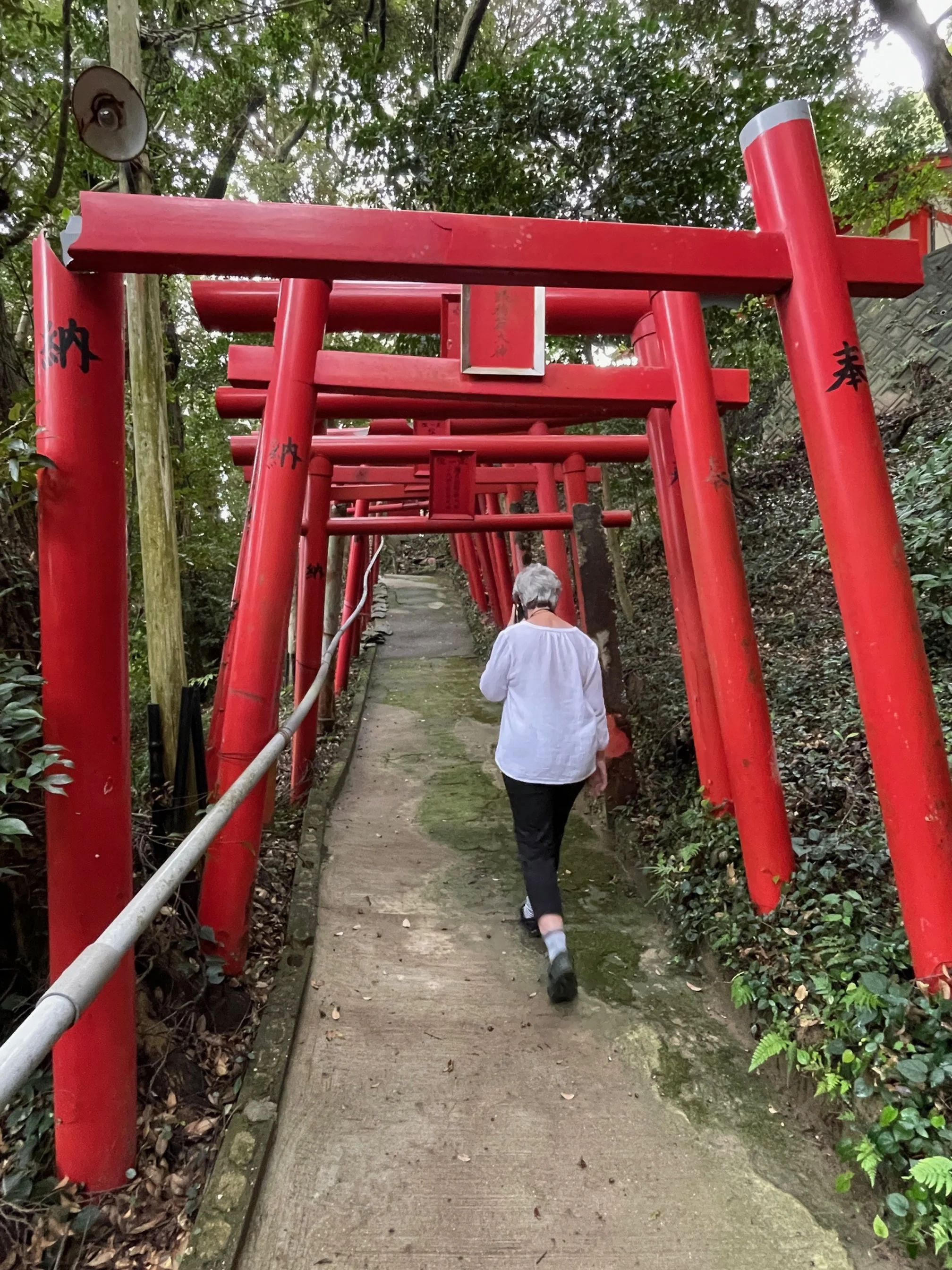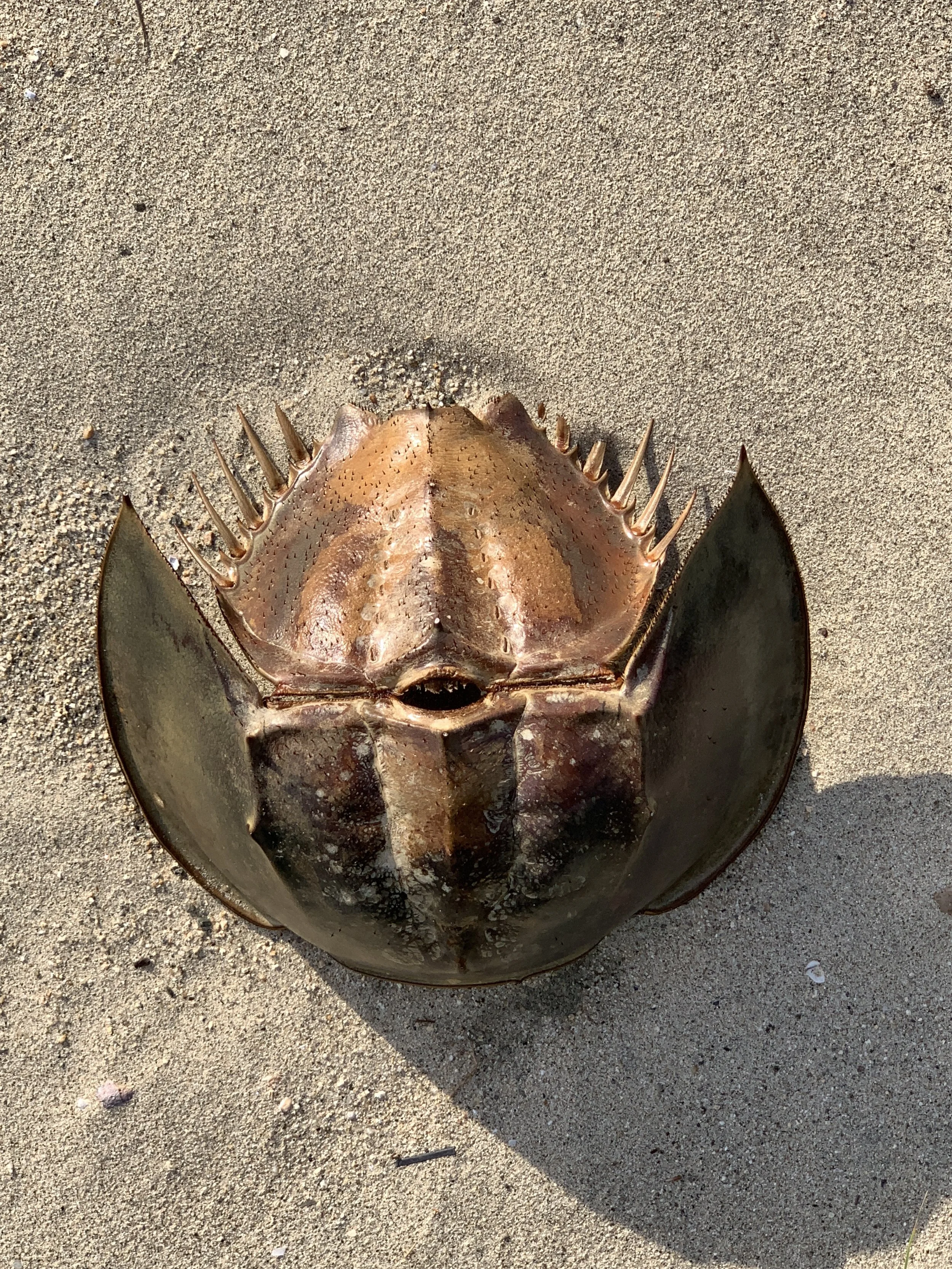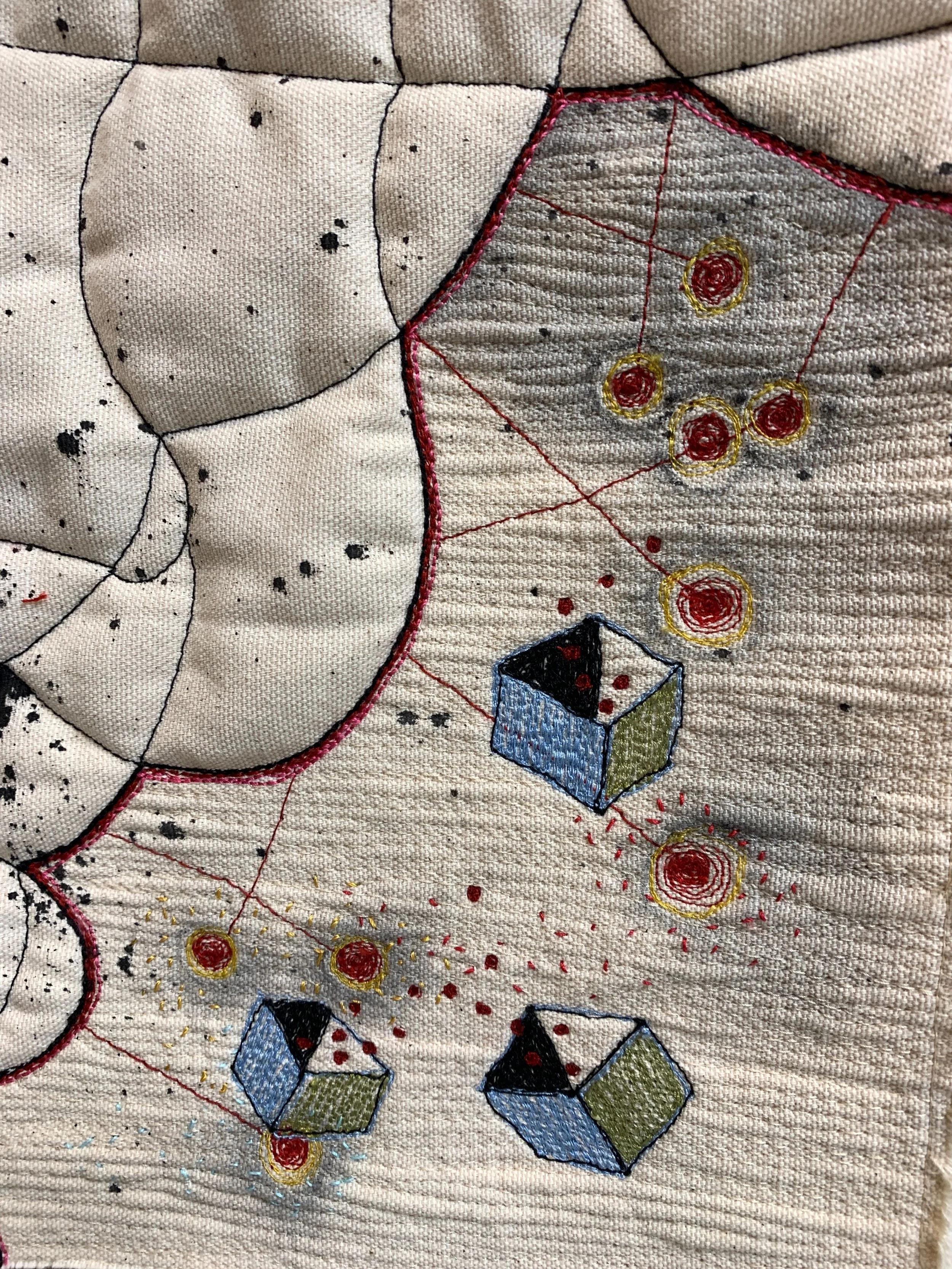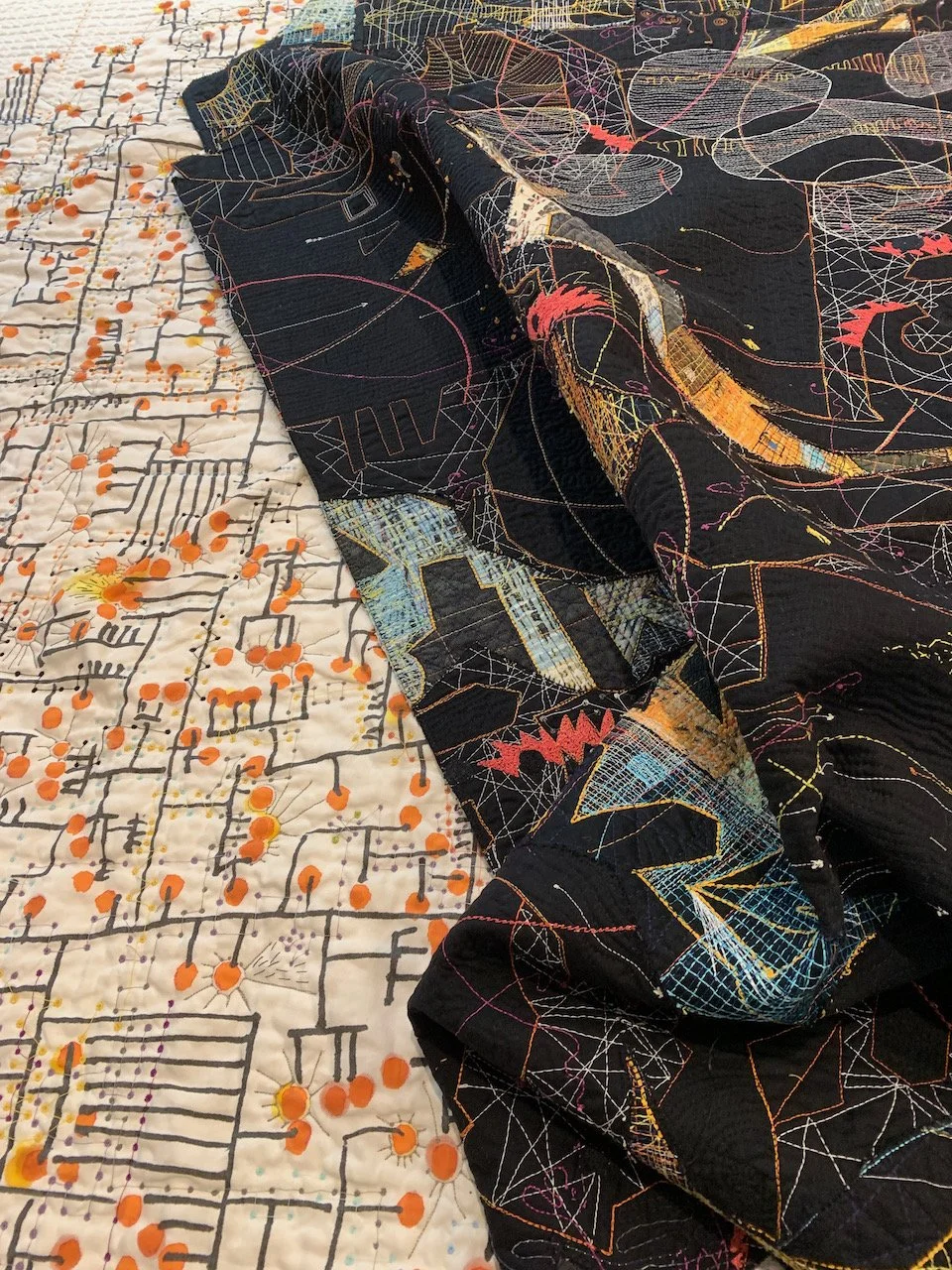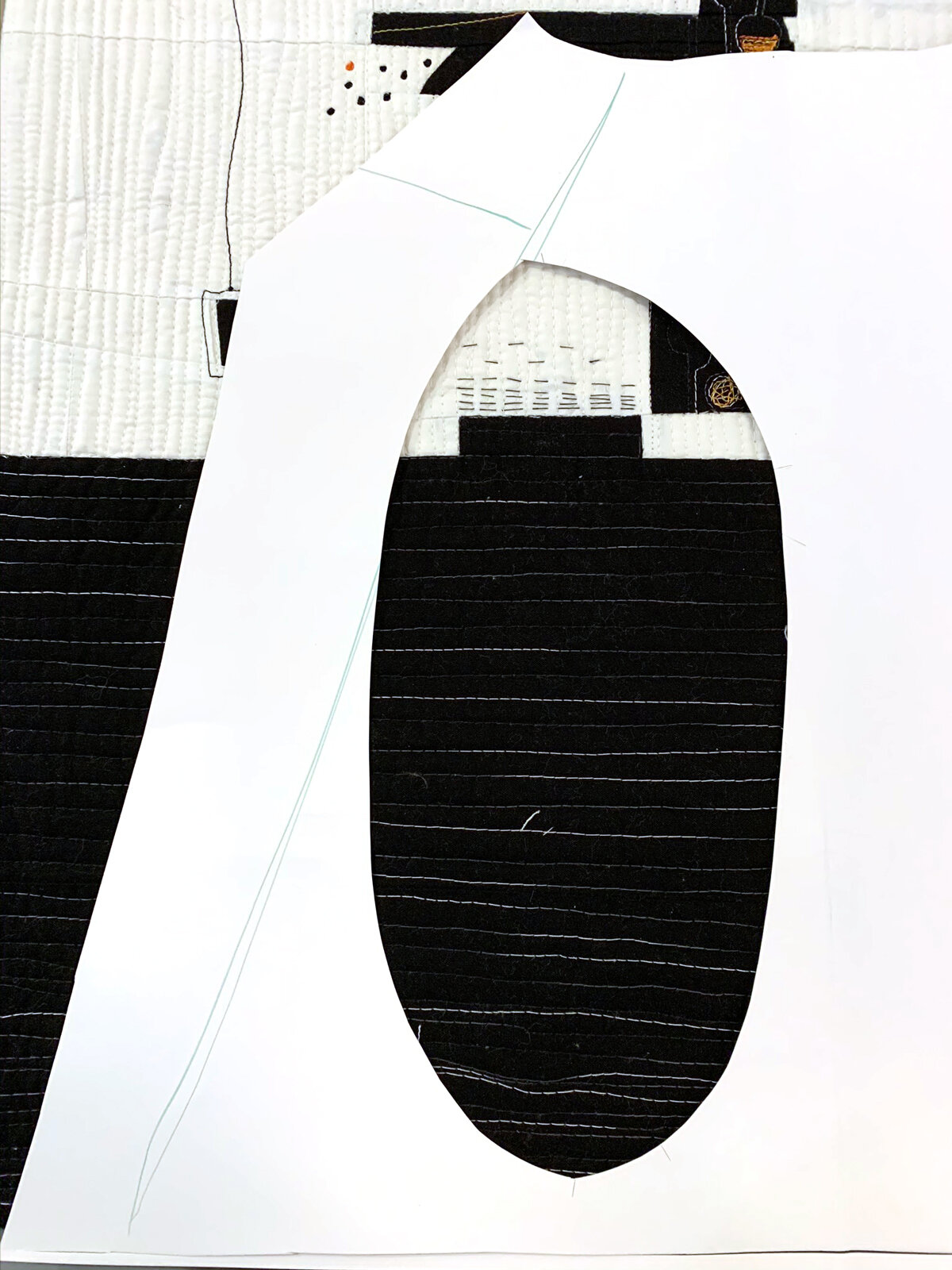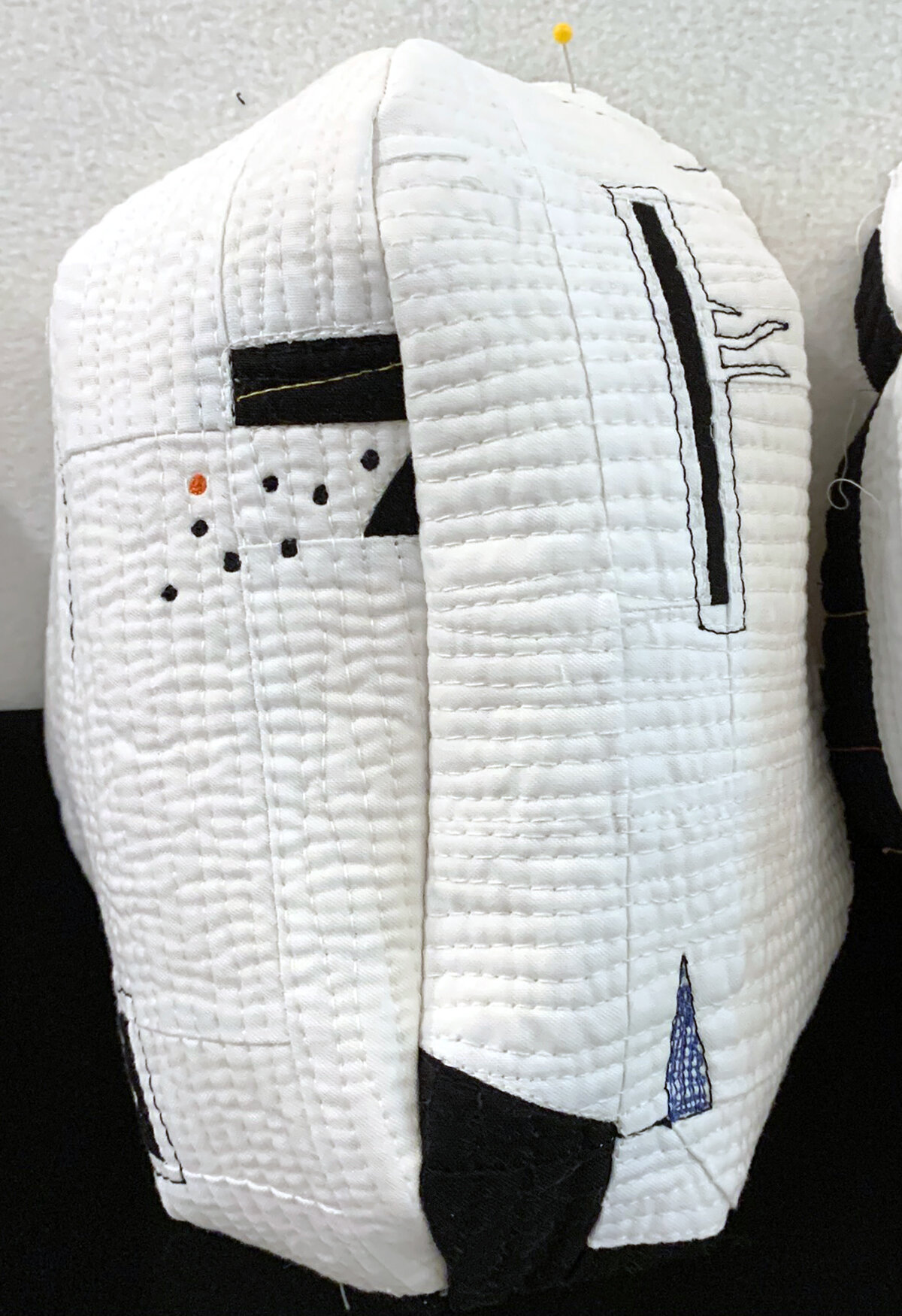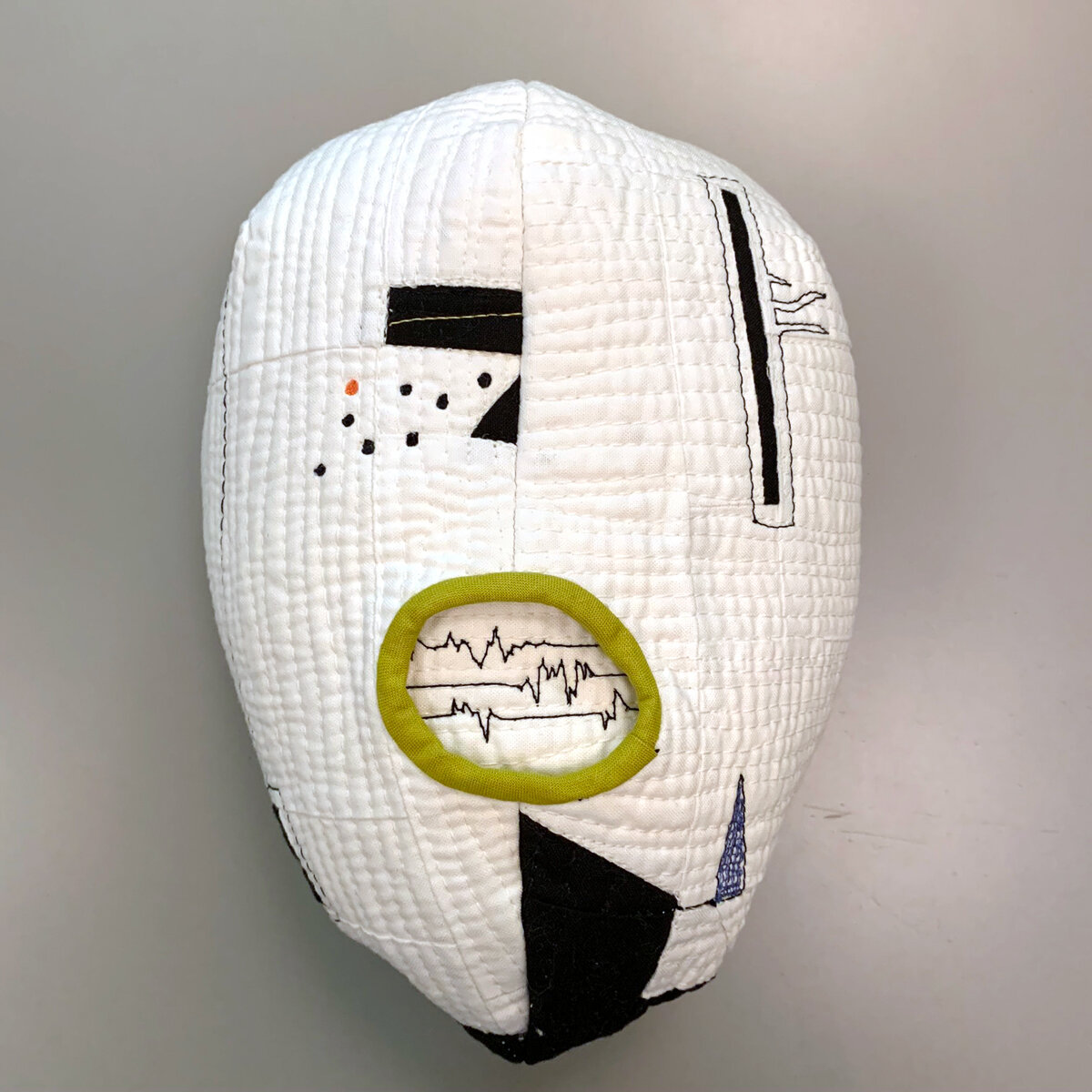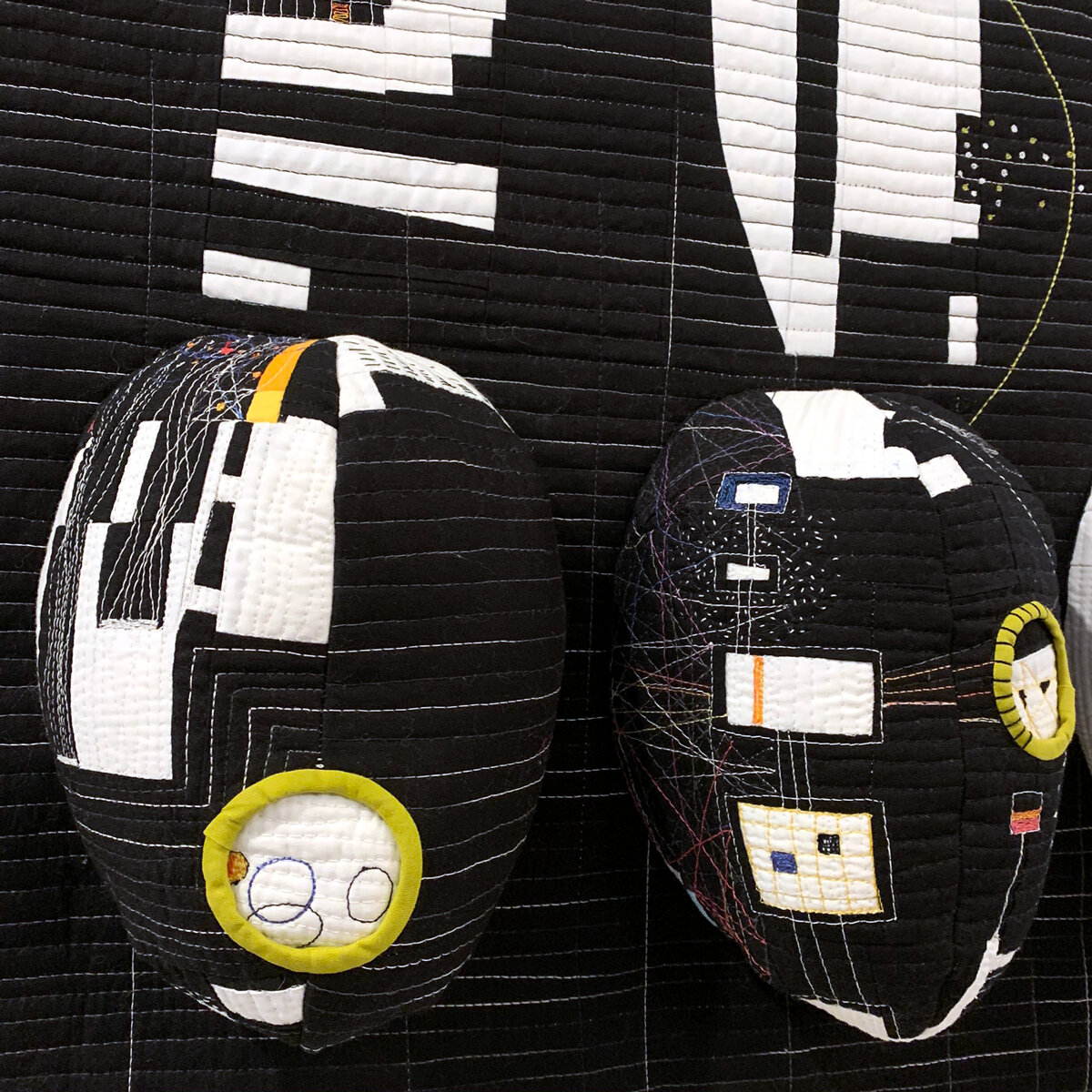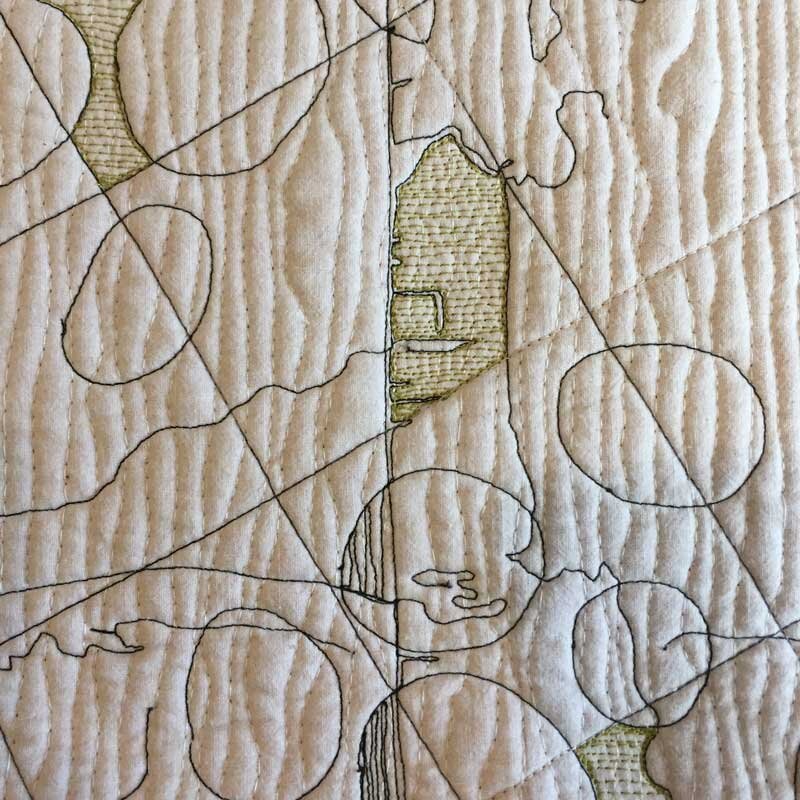Back in 2015, I had the opportunity to do an artist residency in the dunes of Lake Michigan. I was captivated by the lake stones. They had personality, presence and power.
Soon after I started stitching them.
They populated my studio to the point that I had faces looking at me from every corner. So I started putting them together. I had this idea that they were trying to tell us something but in a language all their own.
I liked how the stitching looked on the front as well as the back of the work. I hand-stitched more texture, added extra batting, and let them tell me what they wanted to say.
The final piece, called The Secret Life of Stones, was juried into Quilt National 2017 and traveled for three years.
The Secret Life of Stones, Paula Kovarik, 2016, 40” x 47”, canvas, cotton thread, wool and cotton batting.
It came back to me last year and went into storage. I really didn’t know what I was going to do with it so I stacked it up with the others and waited until it spoke to me. And, if you follow this journal, you will know that I am in a cutting up kind of mood. Nothing is precious. All things must evolve.
So I cut it up.
And made some masks.
And some more.
It’s showing up in other experiments too. Playful things that give me a little laugh during these stressful times.
There are still some scraps to consider. They’ll join the rest of them in my scrap box.
Every so often one or two of them speak to me and give me something else to think about.
Who doesn’t love these two guys?
Cutting up what might be considered precious allows me to let go of the legacy of it and be in the moment. I seek that feeling of exploration and discovery in every work I create. Using up, re-configuring, re-imagining raw materials can lead to disaster or development. When it is a disaster, I learn. And that’s what I am here for. To learn, to excite, to think of alternatives. All things must evolve.
